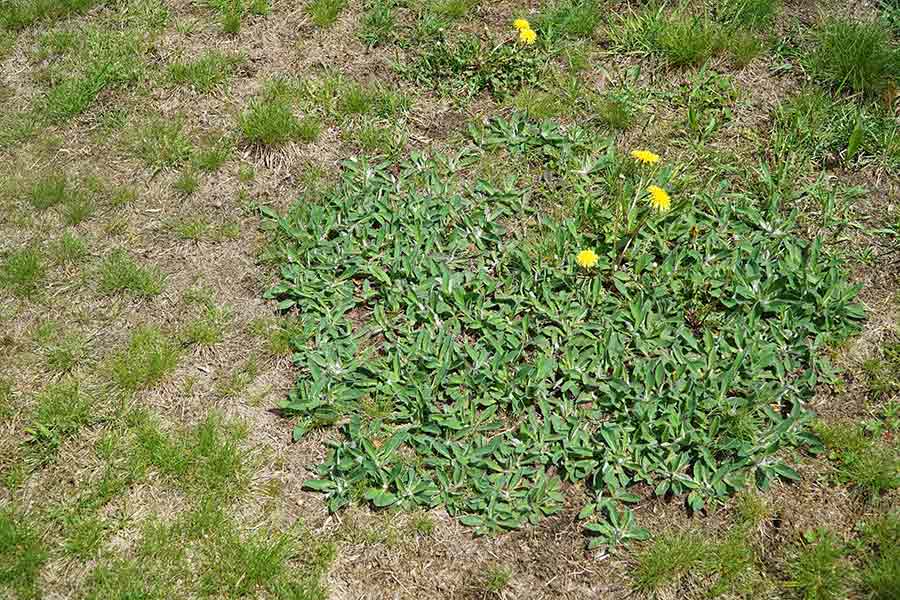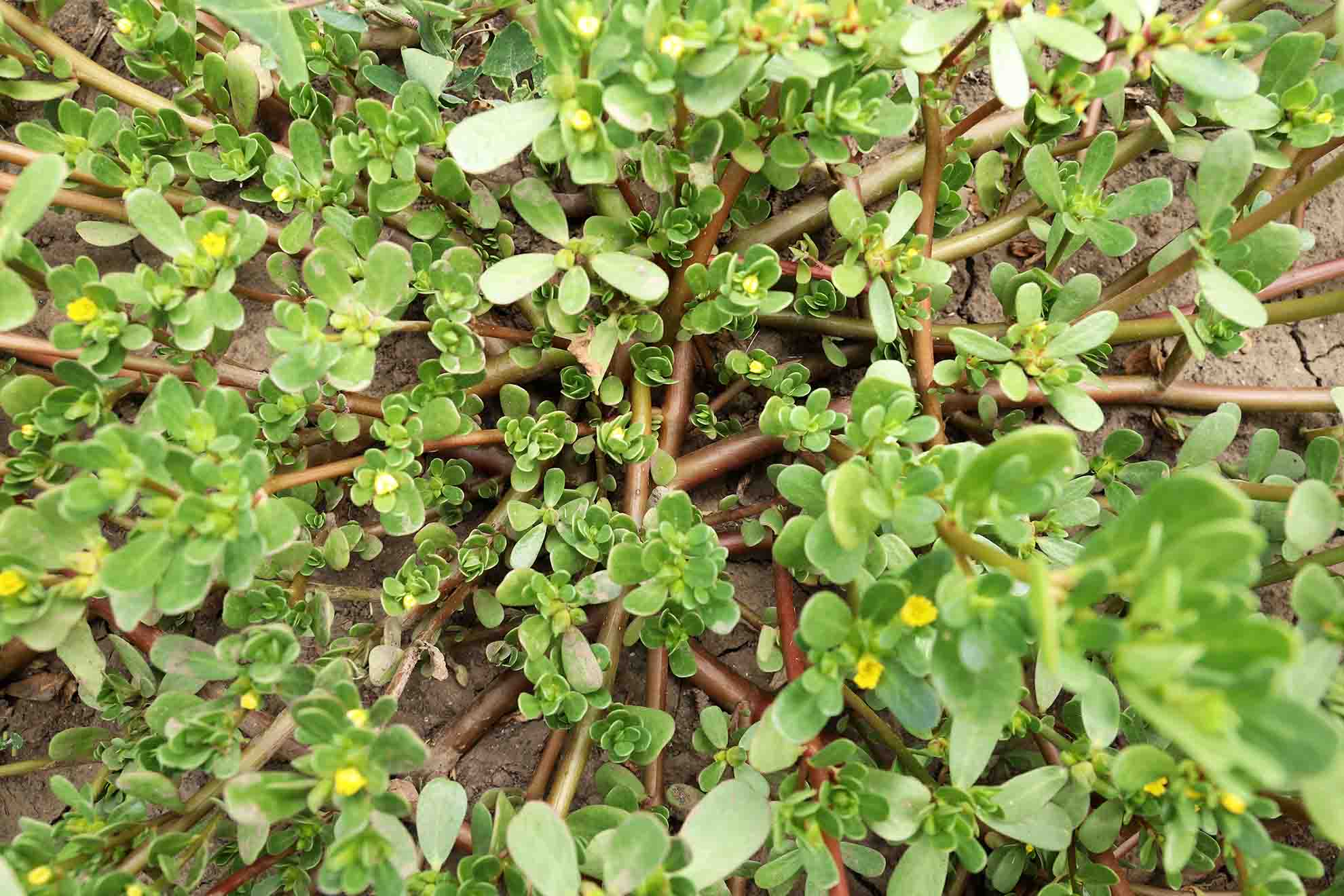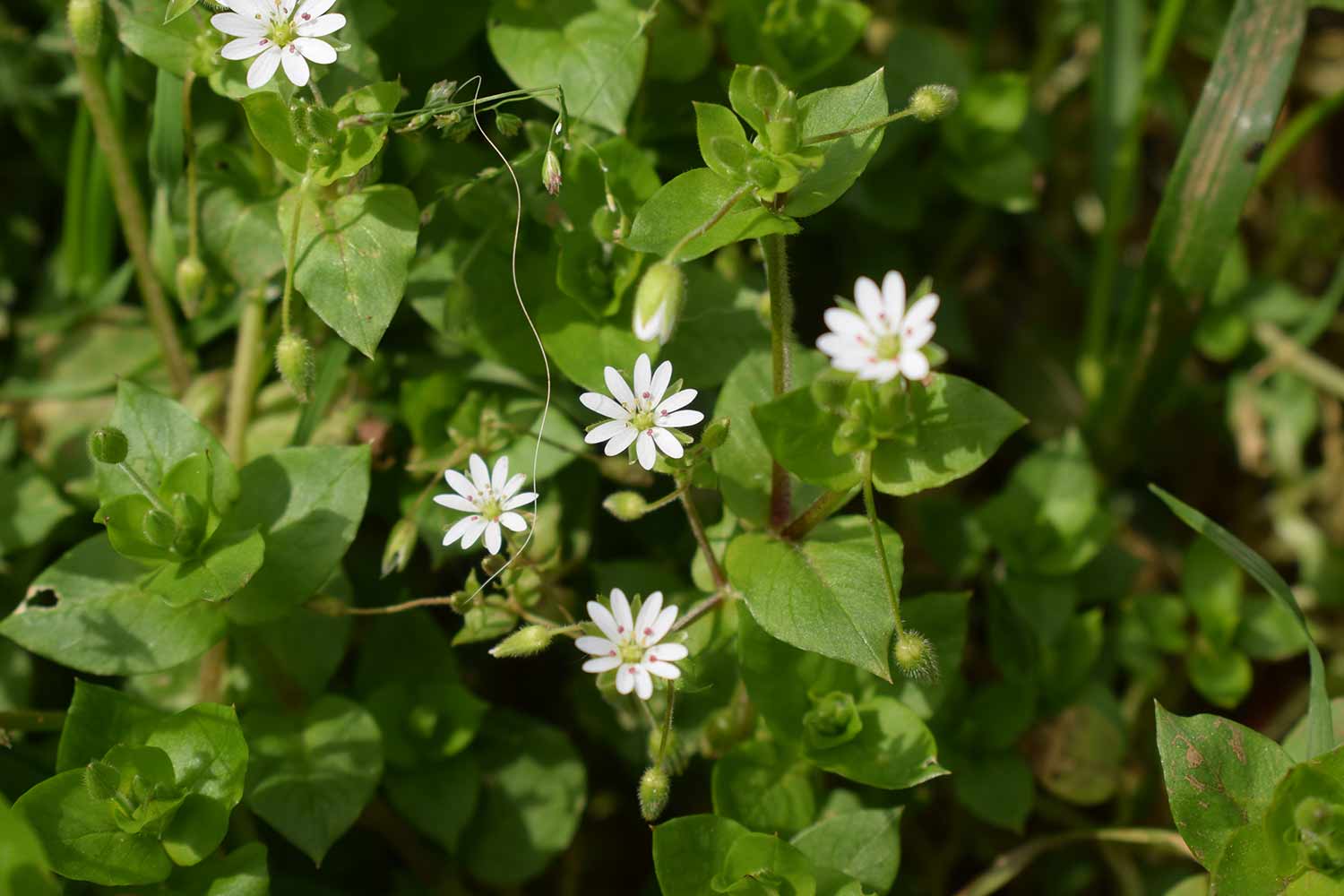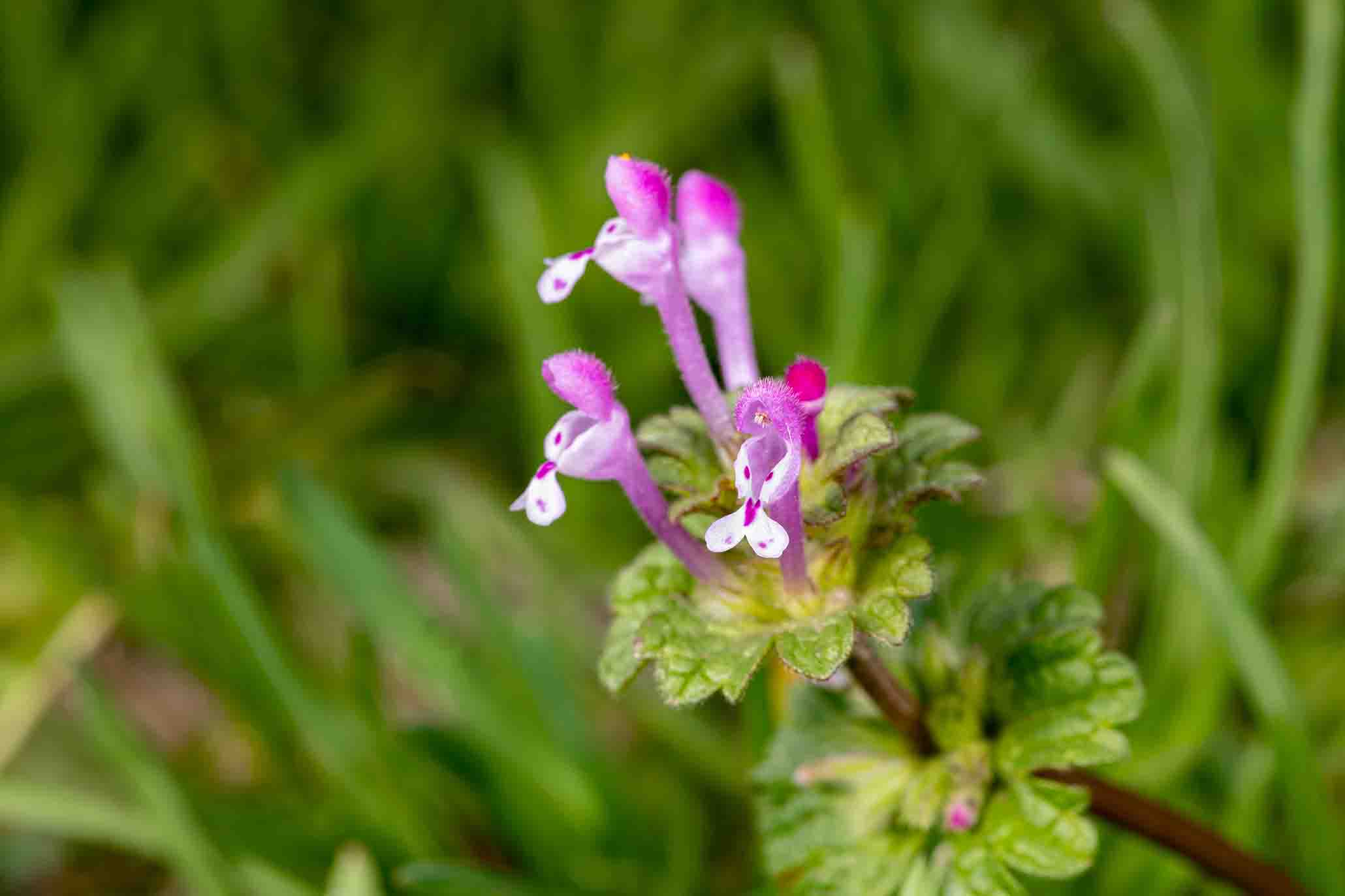Lawn weeds in New Jersey can be found in even the most meticulously maintained yards. Many persistent and stubborn weeds know how to find and exploit your lawn’s weaknesses, and they can do real damage to your landscape if they go undetected.
To help you identify these invaders as early as possible, the Healthy Lawn team has put together this list of the 8 most common lawn weeds in New Jersey! Be sure to check out our weed control services for more help with your lawn care!

Dandelions are the most recognizable weed in the country, but don’t be fooled by their bright flowers! This weed damages lawns by exploiting thin or stressed turf, establishing themselves through deep taproots that compete with grass for nutrients and space. These taproots make them incredibly resilient, allowing them to pull moisture and nutrients away from surrounding turf while anchoring themselves too deeply for casual hand-pulling to remove.
As the plant grows, its broad leaves form low-growing rosettes that block sunlight from reaching nearby grass blades, gradually weakening turf and creating bare spots where even more weeds can germinate. When the familiar puffball seeds mature, they disperse widely across the lawn, enabling rapid infestation if the turf remains stressed or unhealthy.
How To Identify Dandelions:

Crabgrass is a grassy weed that is sometimes difficult to differentiate from your turf. You will notice it forming sprawling mats that smother desirable turfgrass. Its low, horizontal growth habit allows it to shade and crowd out young or thin grass, while its aggressive summer growth rate gives it a major advantage during hot New Jersey weather.
Once established, crabgrass produces thousands of seeds that remain viable in the soil o your lawn for years, guaranteeing recurring outbreaks if the lawn is not densely maintained. Its presence also signals underlying issues, such as compacted soil, improper mowing, or heat stress, that make turf more vulnerable to future weed invasions.
How To Identify Crabgrass:

Purslane invasions are notorious for thick, matted stems that outcompete turfgrass for sunlight and soil space, especially during the hottest parts of summer. These fleshy, succulent stems and leaves store water efficiently, allowing it to continue growing while cool-season grasses begin to slow down.
It is most commonly found in sunny, open areas of the lawn, gradually expanding outward as its stems root at multiple points. Even small fragments of the plant can regrow, and its seeds can survive for decades, making it a stubborn and recurring invader in lawns that remain thin or drought-stressed.
How To Identify Purslane:

This broadleaf weed produces small white flowers in your lawn, but chickweed is not as harmless as it seems. Although delicate and pleasant in appearance, chickweed spreads quickly by rooting along its stems and producing numerous seeds during its cool-season growth window.
Once it gains a hold, it interferes with grass emergence in spring and fall, preventing turf from thickening and leaving long-term bare patches that attract more weeds. Its rapid growth and ability to thrive in low-light areas make it a persistent nuisance in New Jersey.
How To Identify Chickweed:

Henbit is easy to spot in your yard once you know what to look for, and removing it is key to lawn care success. Henbit damages lawns by establishing itself during fall and winter when turf is less active, then growing aggressively in early spring before most lawn care routines begin. This weed’s rapid spring growth also produces seeds before homeowners notice it, allowing it to reappear year after year if the lawn is not kept dense and well-fed. Its preference for low-fertility soil makes it especially common in neglected or under-maintained turf.
How To Identify Henbit:

White clover in your lawn is anything but lucky, as it spreads through creeping stolons that root at multiple points, forming expanding patches that displace turfgrass. Because clover can fix its own nitrogen, it thrives in nutrient-poor soil where grass struggles to grow, giving it a natural advantage that accelerates its spread.
Its low growth habit makes it infamous for avoiding mower blades, letting it thicken even in regularly maintained lawns. Over time, large clover patches disrupt the uniform appearance of turf and encourage soil conditions that favor other weeds, especially in lawns that are not fertilized consistently.
How To Identify White Clover:

Black medic is sometimes confused with dandelions, and both cause similar damage to your lawn. It has a deep taproot that helps it withstand heavily trafficked areas. As the plant spreads, it crowds out surrounding grass and deposits seeds that lead to recurring infestations. It grows well during periods of summer stress and often expands just as cool-season grasses begin to decline, leading to bare patches and long-term thinning if the underlying soil issues are not corrected.
How To Identify Black Medic:

Annual bluegrass is perhaps the most difficult lawn weed to detect, as this grassy weed is almost identical to many turfgrass types. It forms pale green clumps that disrupt turf uniformity and weakens the lawn’s density as it competes for space, nutrients, and early-season sunlight.
Its prolific seed production spreads rapidly, and once summer heat arrives, annual bluegrass dies off, leaving unsightly brown patches that invite crabgrass and other warm-season weeds. Over time, this cycle of invasion and die-off creates recurring issues that will consistently make your lawn appear to have dead patches.
How To Identify Annual Bluegrass:
Finding and dealing with lawn weeds is not always the easiest task for DIY lawn care enthusiasts. There are many varieties of weeds and different control methods to familiarize yourself with before you can effectively defend your turf. That’s where we come in!
Healthy Lawn offers pre-emergent and post-emergent weed control services to keep your New Jersey lawn spotless all year long. Call us today for a free consultation on the best lawn care in town!